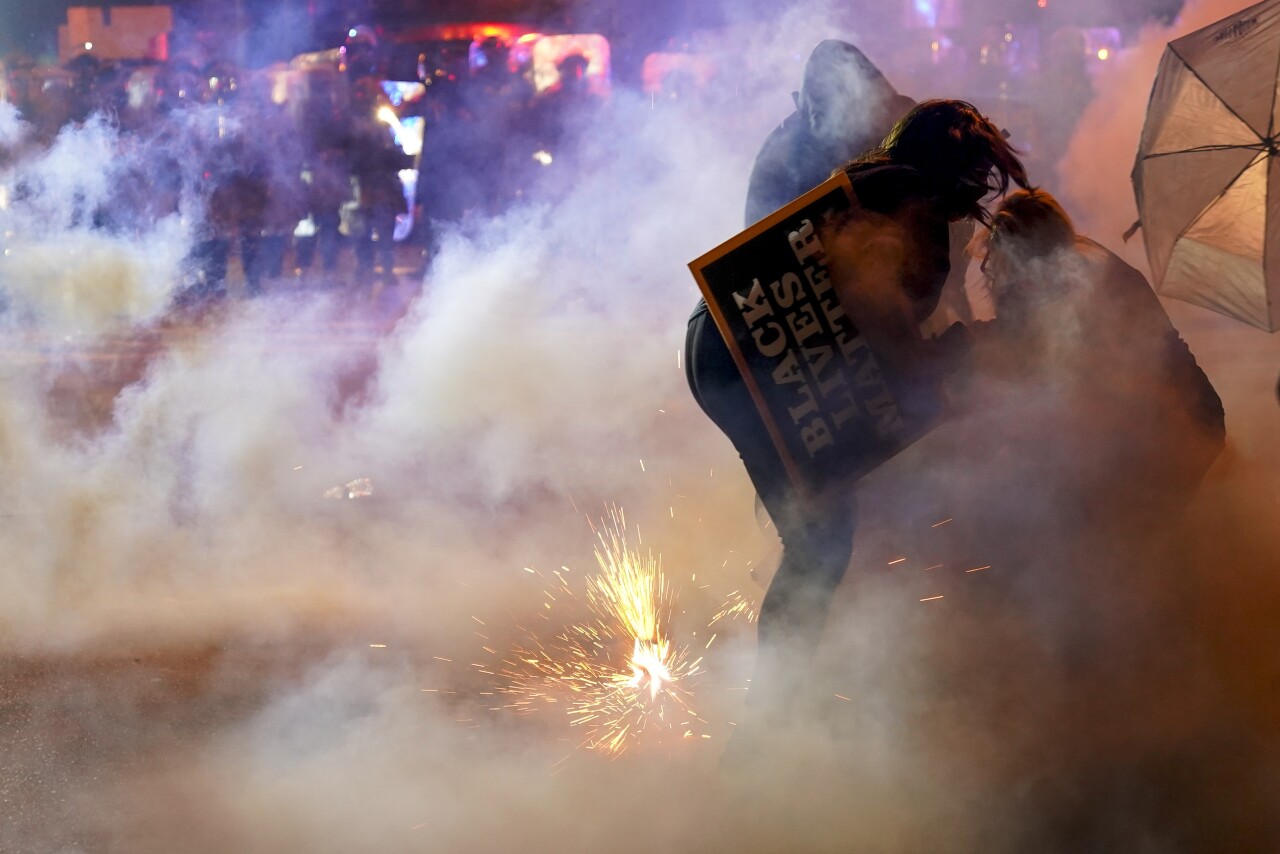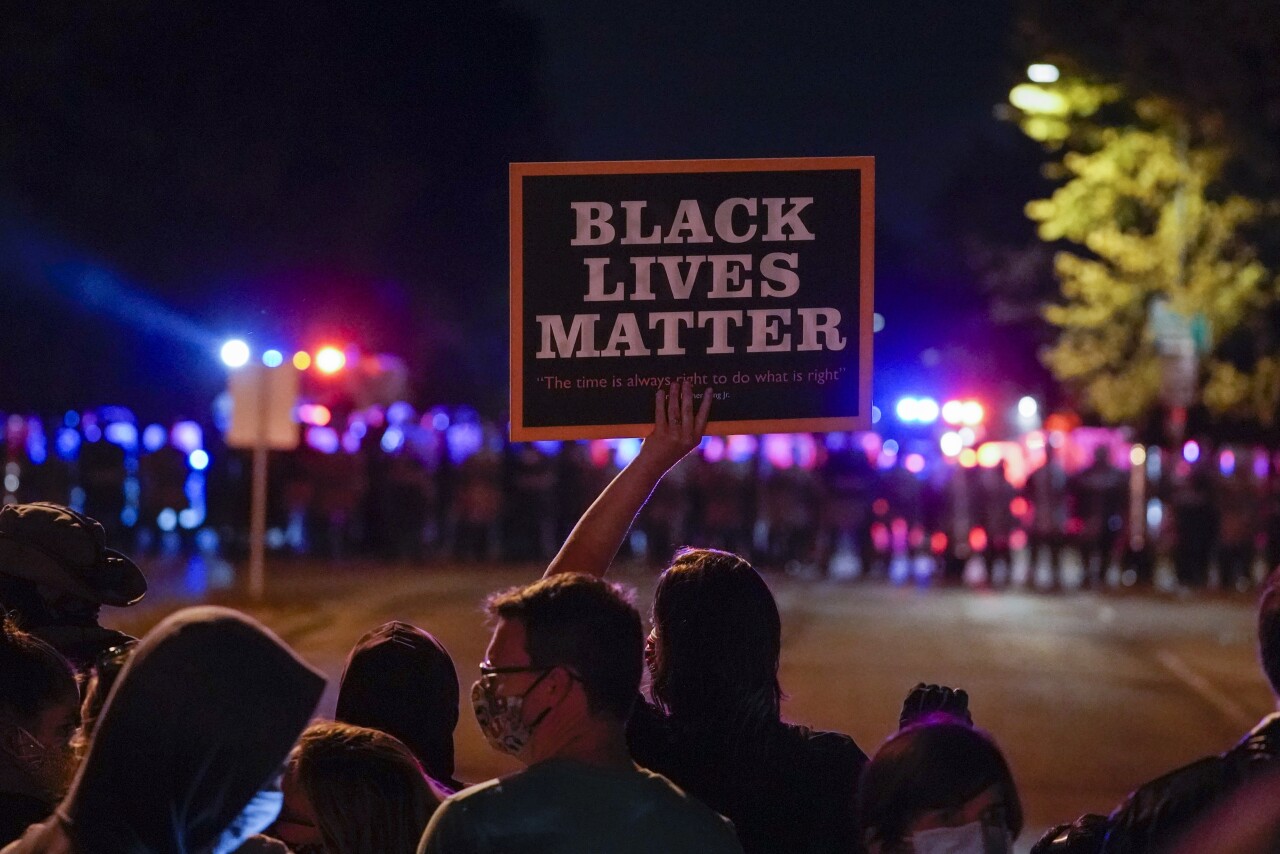WAUWATOSA — A document created by the Wauwatosa Police Department and shared with the Federal Bureau of Investigations (FBI) is raising concerns among people who participated in protests in 2020.
TMJ4 received the redacted document from an Open Records Request. It lists over 200 names of people who participated in protests in Wauwatosa during 2020. The Wauwatosa Police Department confirms the document was shared with the FBI.
“Calling it a list of protesters is an oversimplification and not the case,” Lt. Joseph E. Roy said in a statement. “The Wauwatosa Police Department can confirm the existence of a document which was developed as a tool for identifying potential witnesses, victims, and suspects who were involved in any way with protesting during 2020.”

“It tells us there are about 203 people on the list,” Attorney Kimberly Motley said. “Home addresses, phone numbers, make, model, and year of vehicles. It’s problematic for a lot of reasons. We have a Constitution that allows for people to peacefully protest and frankly, to survey and create lists of people who are invoking their constitutional rights to protest may give a real chilling effect against peacefully protesting. I think that police resources, perhaps, could be better utilized.”

The list includes well known protesters like Frank Nitty and Khalil Coleman, elected officials like David Bowen and Jonathan Brostoff, and at least one journalist, Isiah Holmes with the Wisconsin Examiner.
Records available in a civil suit filed against the City of Wauwatosa show a Crime Analyst with the Wauwatosa Police Department was updating the list. A document filed by Motley says, Dominick Ratkowski testified that the list was updated hundreds of times from June 5, 2020, to January of 2021.
Newly appointed Chief of Police James MacGillis says he was not aware of the list while he was applying for the Chief position. However, he has been made aware now.
“It’s no surprise to me,” MacGillis said. “You say list, to me, that looks like part of a report that’s used for legitimate law enforcement purposes, based off of my experience in law enforcement. But, I know if the community has questions, they want answers. When I come in as the Chief, that’s something I’ll be addressing.”

MacGillis will officially take over as Chief on July 26. While MacGillis wasn’t in charge when the list was created and doesn’t know specifics about the list yet, he does back up this tactic in policing.
“That doesn’t surprise me that we gather information,” MacGillis said. “Sometimes, it’s fragmented information. It looks to me to be a part of an informational report that law enforcement uses all the time. It’s not for nefarious purposes. We use it for legitimate law enforcement purposes. To increase our capacity, to increase our intelligence, so we can deliver public safety effectively and efficiently.”
The I-Team reached out to several law enforcement agencies about their practices with protest participants. Both Kenosha Police and the Kenosha County Sheriff’s Department say they do not maintain any list similar to the one in Wauwatosa. The Minneapolis Police Department, which arguably had the largest protests since George Floyd was killed by one of its former officers, said it does not maintain a list like this either.
In a statement, Director John Elder said, “We do not keep a database of those who participate in protests. The Minneapolis Police Department strongly encourages people to exercise their First Amendment rights lawfully.”
Protests in Wauwatosa were similar to protests seen across the country. The demonstrations were largely peaceful. In one incident, a shotgun was fired outside the home of former Wauwatosa Police Officer Joseph Mensah. Mensah was at the center of many of protests in Wauwatosa after he shot and killed three people in the line of duty over five years. Two of those shootings were considered justified and a third will have a decision within a few months.
However, according to court documents, the list was created at least two months before that incident and at least one person, Wisconsin Examiner Reporter Isiah Holmes, was not there that day. Holmes first reported of the existence of the list in January, believed to be about 40 names. The release of the full list shows over 200.

“It’s very, very troubling that protesters are being targeted,” Motley said. “It is troubling that attorneys, who are doing their job are being targeted. Frankly, it’s troubling that journalists are being targeted.”
“It is disturbing,” Christine Groppi said. “It’s distressing.”
Groppi is one of the 200 people on the list. Participating in Civil Rights protests is nothing new for her family; Father James Groppi was a mainstay in the fight for fair housing in Milwaukee and other Civil Rights efforts. Now, more than 50 years later, Christine says she is facing the same troubles as her father.

“My father went through this,” Groppi said. “He was persecuted by many. Protesters are being criminalized in this way. The very fact that you put somebody’s name on a list and then you circulate that list amongst law enforcement is, at the very least, a strong implication that the person has done something illegal.”
Groppi is in the vast majority of people on the list who have never been charged with a crime. The I-Team ran the names through Wisconsin’s Public Criminal Records Check. 74.3 percent of the list has never been charged with a misdemeanor or felony.

“Most of us are professionals, educators, social workers, counselors or other kinds of professionals,” Groppi said. “We are not people who engage in any kind of criminal behavior. We are people who are interested in fighting justice.”
“This is a case of business as usual with police and the Black community,” Local Historian Reggie Jackson said. “It takes away from people feeling comfortable taking advantage of their first amendment rights if they know that they’re going to be surveilled by having this list available, not only to the Wauwatosa Police Department but the FBI as well. That’s very problematic.”
Though this list is just one example of potential overreach, Jackson draws similarities to the FBI’s Counter Intelligence Program, known as COINTELPRO. It was created in the 1950s to spy on those supporting political opposition to the status quo, like the Black Panther Party.
“COINTELPRO was designed to destroy these organizations,” Jackson said. “Make it so they couldn’t be powerful. That was the rationale behind it. So to me, we’re just as top away from that with this list.”
“Our primary focus is public safety,” MacGillis said. “Making sure people can express themselves and that they can do it in a safe manner. But also, holding people accountable to public safety. When they break the law, we have to do that role as well.”
MacGillis says he is not aware of the strategy behind creating the list but says it will be one of the first thing he addresses when he takes over later this month.

Until that happens, those on the list will still have high concerns.
“To what end are they targeting, surveying or at least strongly implying to other law enforcement agencies that these are problem people?” Motley said.
“It’s an attempt to silence people” Groppi said. “To intimidate people and keep people from exercising their First Amendment right to protest.”
Of those who were able to be identified, the list shows 39.6 percent are white and 35.4 percent are Black. There are 47 entries where race is not determined.

In determining gender, the Police Department shows 40.7 percent were female and 36.4 percent were male. There are 48 entries that did not have a gender determined.




